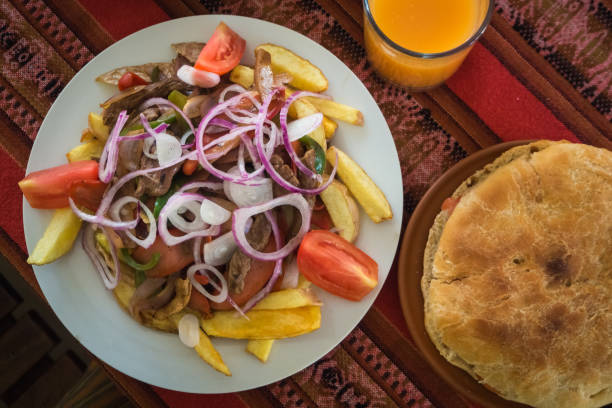Introduction: Bolivian cuisine overview
Bolivia’s cuisine is a diverse mix of indigenous and colonial Spanish culinary traditions. It is characterized by its use of native ingredients such as quinoa, potatoes, beans, and corn, as well as a variety of spices and herbs. Bolivian cuisine also varies by region, with the highlands, lowlands, and valleys all having distinct culinary traditions and cooking methods.
Common cooking methods in Bolivian cuisine
Bolivian cuisine features a range of cooking techniques, including grilling, baking, frying, and boiling. One of the most common cooking methods is the use of a comal, a flat griddle used to cook bread, tortillas, and other flatbreads. Another popular method is charring vegetables over an open flame, which imparts a smoky flavor to dishes like salsa and roasted peppers. In addition, many Bolivian dishes are slow-cooked, often over an open fire or in a clay pot called a paila. This method is used to prepare dishes like the hearty stew called puchero, which is made with beef, vegetables, and corn.
Importance of native ingredients and spices
Native ingredients play a significant role in Bolivian cuisine and are used in many traditional dishes. For example, quinoa is a staple grain that is used in soups, salads, and stews. Potatoes are also a key ingredient, with dozens of varieties grown in the country. Spices and herbs like cumin, oregano, and cilantro are commonly used to add flavor to dishes. Many Bolivian dishes also feature chilies, both fresh and dried, which add heat and depth to the flavor profile.
The influence of Spanish colonization on Bolivian cuisine
Bolivian cuisine has strong Spanish influences, particularly in the use of meats like beef, pork, and chicken. Spanish colonialists also brought with them new ingredients like rice, wheat, and sugar, which have become integrated into traditional Bolivian dishes over time. European cooking techniques like frying and baking also became popular during this time.
Traditional dishes and their unique preparation methods
Bolivia has a wide variety of traditional dishes, each with its unique preparation method. One dish, called salteñas, is a type of empanada filled with meat, vegetables, and a sweet and spicy sauce. The dough is made with lard and is typically baked to create a slightly crispy texture. Another popular dish is called ají de gallina, which is made with shredded chicken in a creamy sauce made from ground peanuts, bread, and cheese. The dish is typically served over boiled potatoes or rice.
Street food and its cooking techniques
Bolivia is known for its vibrant street food scene, with vendors selling everything from empanadas and tamales to grilled meat skewers. Many street foods are prepared using open flames or grills, giving them a distinctive smoky flavor. One popular street food is anticuchos, which are skewered and grilled beef heart. The dish is typically served with boiled potatoes and a spicy salsa.
Regional variations in Bolivian cooking methods
Bolivia’s different regions have distinct cooking traditions and techniques. In the highlands, for example, slow-cooking methods like the use of a paila are common, while in the lowlands, grilling and roasting over open fires are more prevalent. In the valleys, dishes often feature a combination of cooking methods, with ingredients like quinoa and potatoes used in a variety of ways.
Conclusion: Bolivian cooking techniques and their significance
Bolivian cuisine is a rich and diverse mix of indigenous and colonial traditions. The use of native ingredients and spices, as well as a range of cooking techniques, gives Bolivian dishes a distinctive flavor and texture profile. From traditional slow-cooked stews to street food grilled over open flames, Bolivian cooking techniques reflect the country’s geography, culture, and history.

